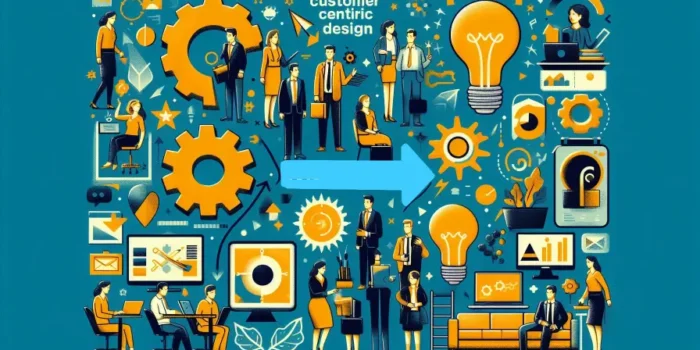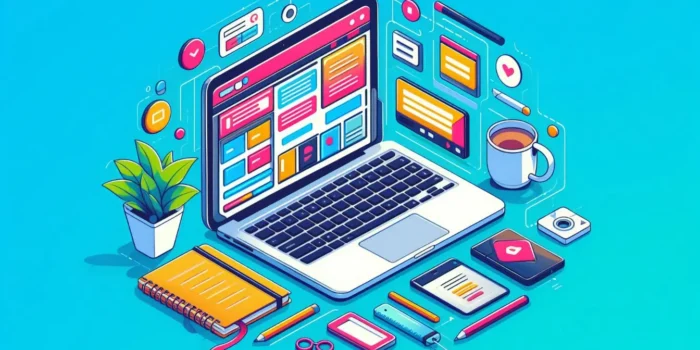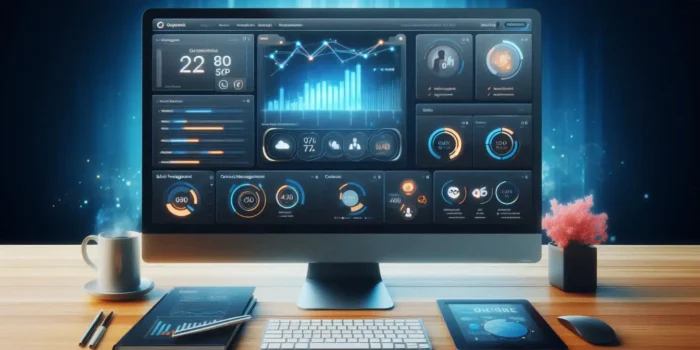Would you believe me if I told you that your physician, who is at the hospital, can accurately predict your heart attack even before you start having obvious symptoms? That too with no surveillance or electrodes (sensors) stuck to your chest! With just a small wearable, such as a fitness band or smartwatch, wrapped around your wrist.
IoT is all about making your life easier. From lowering the temperature of your AC with your voice command to monitoring your heart rate, IoT can help you more than you can imagine.
However, if you’re not a technology-enthusiast, you may not be sure about what the term IoT or the Internet of Things means.
What is IoT?
As the word itself suggests, IoT is a network of devices(things) interconnected through an application software: IoT gateway. With the help of sensors and transducers, an IoT device detects physical properties—such as temperature, pressure, motion, weight, light—and converts them into electrical signals. Then, an IoT gateway receives the signal and processes it into useful information.
The electrical signal generated through IoT devices can be used to solve complex, daily life problems. As a common use case in healthcare, it enables real-time tracking of medical equipment, such as nebulizers, medical kits, oxygen pumps, and wheelchairs.
| Statista says, there are 10 Billion IoT devices now and they are going to be 21.5 Billion by 2025 |
Also, with the help of sophisticated technology—especially Big Data, Artificial Intelligence, and Cloud Computing—the scope of IoT is increasing every day. For example, the data collected through a wearable, such as a smartwatch, of a patient can help the physician learn whether a treatment is working or not.
Why is IoT Popular in Healthcare?
The reason is obvious—IoT is a win-win for everyone: patients, physicians, families, hospitals, and insurance companies. In the healthcare space, IoT saves time and money for patients, empowers physicians, enables better treatment, and helps in better insurance management.
Remote Monitoring
Thanks to IoT, you don’t need to rush to the hospital or stay admitted every time you need a healthcare professional to keep an eye on your health. Your physician can monitor your health from the hospital while you lay in your bed. That too with the help of a couple of IoT devices and an IoT gateway—a software application that receives and processes IoT signals generated through the devices.
Remote monitoring has been helping thousands of heart and blood-pressure patients who need regular check-ups of their health conditions. IoT devices, such as fitness bands or smartwatches, can monitor patients’ blood sugar and heart rate and send real-time information to their doctors.
Also, a sophisticated IoT gateway can automatically detect abnormalities in IoT data, such as unusual heart-rate, and send real-time alerts to your doctor or family members.
Affordable Healthcare
IoT has made healthcare affordable, and thus, accessible to more patients. Remote monitoring saves a great deal of time and money for the patients spent on unnecessary doctor visits or readmissions.
Also, IoT helps hospitals efficiently manage their administrative operations, such as automating appointment scheduling or real-time tracking of available beds. It saves the cost of manual work, and consequently, cutting down the healthcare cost.
Better Treatment
Along with sophisticated healthcare analytics, IoT can generate useful and actionable insights that can help healthcare professionals provide better patient care.
The real-time data collected through IoT devices can be processed and documented to make an insightful report on patient history and behaviors. It helps physicians better understand the nature of the ailment and provide better treatment.
Efficient Diagnosis of Diseases
Coupled with advanced healthcare analytics, IoT data collected from a patient can help in a better diagnosis. The insight generated through analytics can help healthcare professionals detect early-stage symptoms of diseases.
With the help of Artificial Intelligence and advanced computing technologies, IoT can automatically detect and warn patients of upcoming health risks.
Easy Equipment And Drugs Management
Thanks to IoT, now you can store huge stacks of drugs and equipment in an organized manner. This leaves no room for human errors or mismanagement of the items. With the help of real-time tracking, you can have efficient access to all the items and hence retrieve them efficiently and effectively with minimal effort.
No Human-Error
Some healthcare operations need precision and accuracy, such as determining the eligibility of a candidate for testing a new drug. Manual handling of data, especially when a huge volume of data is involved, can increase the chances of high human error. On the other side, IoT ensures the data to be error-free.
Efficient Electronic Health Record Management
Suppose you rush to the hospital because of minor chest pain, and the doctor needs to understand your medical history. Within minutes, and with a couple of clicks, he can have access to well-documented reports of your medical history stored in the EHR database.
Although the security of the data can be a concern, IoT devices can come with their encryption protocols—which are more secure and built especially for IoT devices.
Better Insurance Management
Insurance companies are using IoT to bring more transparency in their operations, such as underwriting, claims management, and risk assessment. Also, with IoT devices, it has become easier to detect fraud.
Many leading companies reward their customers if they show better precautions while treatments and lower insurance costs. The companies determine the right candidates based on the IoT data over a significant period.
Seamless Communication Across Hospitals
Since IoT helps you maintain an electronic record of your medical history, now you don’t have to carry a folder of documents of your previous diagnosis. It also helps hospitals to share useful, necessary information seamlessly and cost-effectively.
Also, effective collaboration of hospitals enhances healthcare analytics and research. The huge volume of data collected from patients of multiple hospitals can be useful to healthcare scientists.
Efficient Drug Development
Drug development is a costly and time-taking process. While developing a new drug, pharma scientists use iterative processes that involve chemical reactions between various reagents and ingredients. With the help of IoT and healthcare analytics, they can predict the result even without carrying out reactions. It saves them a huge amount of time and money.
Also, IoT helps pharma companies determine the right candidates for their new drugs. Based on the ideal-candidate profile, and the data collected from various candidates, IoT suggests suitable matches for their testing.

Future of IoT
Although the technology has been around here for some time, the growth of IoT is showing no sign of slowing down. The rise of automation, AI, and cloud computing is making IoT more and more crucial. It wouldn’t be surprising if we find ourselves surrounded by IoT devices in the future.





 Booking System
Booking System eCommerce
eCommerce On-Demand Services
On-Demand Services Community App
Community App Ordering App
Ordering App Loyalty App
Loyalty App Online Learning
Online Learning Directory
Directory Marketplace
Marketplace SaaS
SaaS P2P Platform
P2P Platform eHailing
eHailing Healthcare
Healthcare Finance
Finance Logistics
Logistics Education
Education Food & Beverage
Food & Beverage Retail
Retail FMCG
FMCG Sports
Sports Travelling
Travelling Manufacturing
Manufacturing Renewable Energy
Renewable Energy Mobile Application Development
Mobile Application Development Web Application Development
Web Application Development Source Code Review
Source Code Review Internet of Things (IoT)
Internet of Things (IoT) Cyber Security
Cyber Security